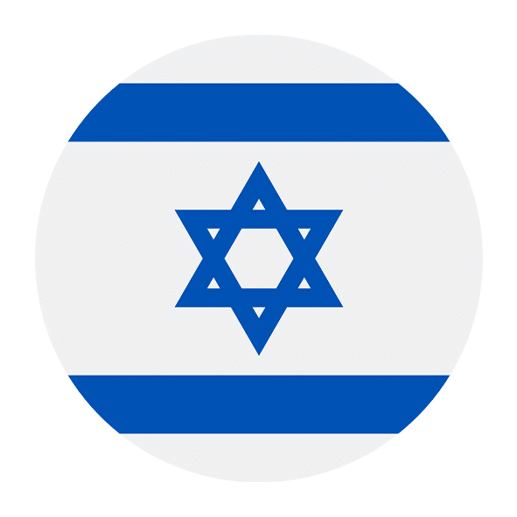Learning a new language can be an exciting and rewarding experience, and delving into Hebrew is no exception. Hebrew, one of the world’s oldest languages, carries with it a rich history and cultural significance. One of the first steps in learning Hebrew is familiarizing yourself with its alphabet. This guide will introduce you to the Hebrew alphabet, providing the foundational knowledge necessary to begin your journey into this ancient language.
Overview of the Hebrew Alphabet
The Hebrew alphabet, known as “Aleph-Bet” (א-ב), consists of 22 letters. Unlike the Latin alphabet used in English, Hebrew is written from right to left. Each letter in the Hebrew alphabet represents a consonant, and vowels are usually indicated with diacritical marks called “nikkud” (נִקּוּד).
Consonants and Basic Sounds
Here is a list of the 22 Hebrew consonants along with their names and approximate sounds:
1. **א (Aleph)** – Silent or a glottal stop.
2. **ב (Bet)** – “B” as in “boy.” When it has a dot (dagesh), it is pronounced “B.” Without the dot, it is pronounced “V” as in “vet.”
3. **ג (Gimel)** – “G” as in “go.”
4. **ד (Dalet)** – “D” as in “dog.”
5. **ה (Hey)** – “H” as in “hello.”
6. **ו (Vav)** – “V” as in “vine” or “W” in some dialects. It can also represent the vowel sounds “O” and “U” when used as a vowel indicator.
7. **ז (Zayin)** – “Z” as in “zebra.”
8. **ח (Chet)** – A guttural “CH” sound, similar to the “ch” in the German “Bach” or Scottish “loch.”
9. **ט (Tet)** – “T” as in “top.”
10. **י (Yod)** – “Y” as in “yes.”
11. **כ (Kaf)** – “K” as in “kite.” With a dot (dagesh), it is pronounced “K.” Without the dot, it is pronounced as a guttural “CH” sound.
12. **ל (Lamed)** – “L” as in “lion.”
13. **מ (Mem)** – “M” as in “mother.”
14. **נ (Nun)** – “N” as in “no.”
15. **ס (Samekh)** – “S” as in “sun.”
16. **ע (Ayin)** – Silent or a guttural stop, similar to a voiced glottal stop.
17. **פ (Pe)** – “P” as in “pen.” With a dot (dagesh), it is pronounced “P.” Without the dot, it is pronounced “F” as in “fun.”
18. **צ (Tsadi)** – “TS” as in “cats.”
19. **ק (Qof)** – A hard “K” sound, pronounced further back in the throat.
20. **ר (Resh)** – A rolled or trilled “R,” similar to the Spanish “r.”
21. **ש (Shin)** – “SH” as in “shoe.” When the dot is over the right branch, it is pronounced “SH.” When the dot is over the left branch, it is pronounced “S.”
22. **ת (Tav)** – “T” as in “top.” In some dialects, it can be pronounced as “TH” as in “think.”
Final Forms
Some Hebrew letters have special forms when they appear at the end of a word. These are known as “final forms” or “sofit” (סופית). There are five letters with final forms:
1. **כ (Kaf) – ך (Kaf Sofit)**
2. **מ (Mem) – ם (Mem Sofit)**
3. **נ (Nun) – ן (Nun Sofit)**
4. **פ (Pe) – ף (Pe Sofit)**
5. **צ (Tsadi) – ץ (Tsadi Sofit)**
The Role of Nikkud (Vowel Marks)
In modern Hebrew, vowels are not typically written in everyday texts such as newspapers and books. However, for beginners, religious texts, poetry, and children’s books, nikkud are used to indicate vowel sounds. Here are some common nikkud marks and their sounds:
1. **ָ (Kamatz)** – “A” as in “father.”
2. **ַ (Patach)** – “A” as in “cat.”
3. **ֵ (Tzeirei)** – “E” as in “they.”
4. **ֶ (Segol)** – “E” as in “bed.”
5. **ִ (Chirik)** – “I” as in “machine.”
6. **ֹ (Holam)** – “O” as in “go.”
7. **ֻ (Kubutz)** – “U” as in “put.”
8. **וּ (Shuruk)** – “U” as in “flu.”
Reading and Writing Hebrew
Reading Direction
As mentioned earlier, Hebrew is written and read from right to left. This may feel unusual at first, but with practice, it becomes second nature.
Forming Words
Hebrew words are formed by combining consonants and vowels. The vowels (nikkud) are placed below, above, or inside the consonants. For example, the word “שלום” (shalom) means “peace” or “hello.” The letters are ש (Shin), ל (Lamed), ו (Vav), and ם (Mem Sofit). The vowels are not typically written, but when they are, they would look like שָׁלוֹם.
Common Words and Phrases
Here are a few basic Hebrew words and phrases to get you started:
1. **שלום (Shalom)** – Hello/Peace
2. **תודה (Todah)** – Thank you
3. **בבקשה (Bevakasha)** – Please/You’re welcome
4. **כן (Ken)** – Yes
5. **לא (Lo)** – No
6. **מה שמך? (Ma shimcha? / Ma shmech?)** – What is your name? (male/female)
7. **שמי (Shmi)** – My name is…
Practical Tips for Learning the Hebrew Alphabet
Flashcards and Mnemonics
Using flashcards can be a highly effective way to memorize the Hebrew letters and their sounds. You can create your own flashcards or find pre-made ones online. Pairing visual images with each letter can also help. For example, you might visualize a “house” when you see the letter ב (Bet), which sounds like “B” and can remind you of “bayit” (house in Hebrew).
Practice Writing
Practice writing each letter repeatedly. Start by tracing the letters, then try writing them from memory. Pay attention to the direction and order of the strokes, as writing Hebrew letters correctly is crucial for legibility.
Use Resources
There are numerous resources available for learning Hebrew, including websites, mobile apps, and language learning books. Some popular apps include Duolingo, Memrise, and Drops. Websites like HebrewPod101 and YouTube channels dedicated to Hebrew language learning can also be very helpful.
Engage with Native Speakers
If possible, try to engage with native Hebrew speakers. This could be through language exchange programs, online forums, or local community centers. Speaking with native speakers can provide you with real-world practice and help you improve your pronunciation and fluency.
Consistent Practice
Like any language, consistency is key. Set aside regular time each day to practice reading, writing, and speaking Hebrew. Even 15-20 minutes a day can lead to significant progress over time.
Understanding Context and Usage
Historical and Cultural Context
Understanding the historical and cultural context of Hebrew can enrich your learning experience. Hebrew is not just a language; it is deeply intertwined with Jewish history, religion, and culture. Familiarizing yourself with Jewish customs, religious texts, and historical milestones can provide a deeper appreciation and understanding of the language.
Modern vs. Biblical Hebrew
It’s important to note that there are differences between Biblical Hebrew and Modern Hebrew. Biblical Hebrew, as the name suggests, is the language of the Hebrew Bible (Tanakh) and has some differences in vocabulary, grammar, and pronunciation co

